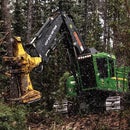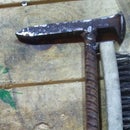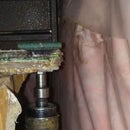Introduction: Broken Welder Experiment Part 2
Im gonna apologize in advance. This project was a failure. After testing, this machine simply did not weld sufficiently enough for it to be called a welder, so I re-assembled it to its original form and will figure something else to do with it. One thing I learned is that 110 volt welders are not as bad as I thought. I was attempting to run the flux core welder on a 15 amp circuit when it was rated for a 20-30 amp circuit which was my fault and lack of knowledge. After this I saved for awhile and bought a cheap DC stick welder. It works well enough on 110 volt power and beats the hell out of this machine.
Lets take a look at the results
Step 1: Beads Produced
The bead produced on the left is by the DC stick welder and the bead on the right is the AC welder. If we examine both, The beads of the AC machine have less penetration and are shorter. The welding arc becomes far less stable under AC and I found it was difficult to keep an arc going. The beads on the left completely penetrated the steel and are longer because it was easier to keep the arc going, it was far more stable. The rod did get stuck but it still out performed the homemade unit.
Note: My welding skills are terrible, I didnt keep the rod going long on DC due to time shortages. I am not a welder by trade, I just like making things out of metal.
Step 2: Welding Rods Used
Part of the problem may have been the rods used. I used Lincoln Electric E6011 rods because they were cheapest at the hardware store. These skinny electrodes may have been too small for the AC welder, (it blew right through them), while the DC welder which is bought ran them far better. I have tried 6011 rods on larger AC tombstone welders in the past and they did not weld sufficiently. The rod burnt too quickly and did not form a decent puddle.
These rods are made to run on either AC or DC based on the package, but I guess they run better on inverter welders with AC outputs rather than transformer output welders with AC. Perhaps using thicker electrodes would produce better welds with the significant amperage.
Step 3: Conclusion:
In conclusion, trying to turn a broken cheap welder into a usable welder is VERY hard to do. Im stupid when it comes to electronics and the machine I tried to make turn out to be a failure. Maybe in the future I may try again. For now, I re-assembled the welder back to its flux core welder form based on the instruction manual and plan to try it on a proper 20 amp service. Because the torch is kinked, I think I may try to re-use the wire feeder components into a spool gun and use it based on that.
Thanks for reading and happy holidays!













